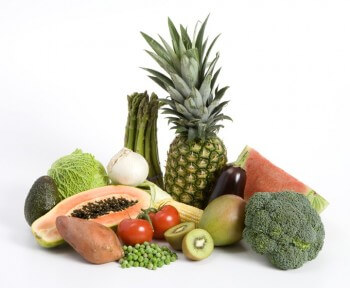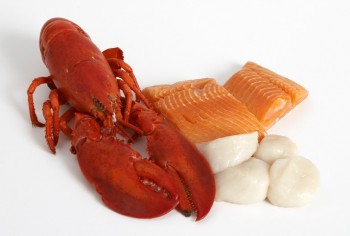
Thank you, Walt Whitman for that simple, yet insightful quote which reminds us to be conscious of the materials we choose to surround ourselves with. You may have read our past posts, 10 Steps to Create a Sleep Sanctuary or Our Body is our Temple, both of which cover the importance of sleeping and surrounding ourselves with quality materials that nourish our skin and body. But, what about ‘eating with the earth?’ Not exactly the first thing that comes to mind when you hear the words “Would you like fries with that?” or when you see the brightly colored packages dancing behind the glass as you whisk past a vending machine.
When we think of a healthy home, there are many elements to consider such as indoor air quality, water (both drinking and bathing), furniture, fabrics & textiles, finishes (flooring, walls and surfaces), construction, lighting (both natural and artificial), cleaning items, electricity and décor artifacts including relics, photos, candles, and artwork. But what about the items that we cannot see at first glance upon entering a home, such as food. What kind of food is lurking in your cabinets, refrigerator or freezer? Are these foods fresh? Are they nourishing? Are they organic? A healthy home is a holistic approach which includes mind, body and spirit; therefore creating an environment that has healing energy would, simultaneously, need to have nourishing substances that we feed our physical body with. Since we have just embarked on the fall season and holiday season is at our footsteps, we tend to ‘nest’ more and do more cooking at home. What better time to take inventory and discard items that are old or expired, donate canned goods to a local charity or church and give thought to what changes you would like to make in this area of your health and well being.
I have always been one to believe that nature, god, the universe or whatever source resonates with your beliefs, provides us everything we need for optimal health and happiness and it is our job to discover it. This slide show, titled, God’s Pharmacy, is a wonderful example of the healing properties found in the goodness of certain fruits, vegetable, legumes and nuts.
This year, the President’s Cancer Panel reported that “the true burden of environmentally induced cancers has been grossly underestimated.” He encouraged better protection of our air, water, food and personal care products from potential carcinogens. A carcinogen is ‘any substance, radionuclide or radiation that is an agent directly involved in causing cancer.’ What began as naturally organic food has been tainted by big business and big agriculture all leading to big dollars and bigger bottom lines. This approach however, transforms these naturally healthy goods into items that are laden with pesticides and/or GMO’s. There are many reasons to purchase organic produce and staples and one at the forefront of many consumers’ minds these days is GMO’s (genetically modified organisms).
According to the Institute for Responsible Technology, a GMO is made by forcing genes from one species, such as bacteria, viruses, animals, or humans, into the DNA of a food crop or animal to introduce a new trait. So what is all the hoopla about and why should you avoid these in your diet? The American Academy of Environmental Medicine cites several animal studies that indicate serious health risks associated with GM food including “infertility, immune problems, accelerated aging, faulty insulin regulation, and changes in major organs and the gastrointestinal system.” Since products that contain GMO’s are not required to indicate this on the label, you must get your trench coat and magnifying glass ready to read between the lines. Hence, you will need to know what to choose and what to lose!

GMO’s are a big concern, but so are pesticides. Another group, EWG had created a simple download the EWG’s Shoppers Guide to Pesticides which can be downloaded for free or you can get the iPhone App! In our new book, Just GREEN It! Simple Swaps to Save the Planet and Your Health, we also offer side-by-side visual comparisons on shopping for everything from pet food and peanut butter to soda and sweeteners.
So before your upcoming Thanksgiving meal, holiday party, office or school function, give a bit of attention to the ingredients you choose. And finally, I recently had a wonderful bowl of beet puree soup at a green women’s networking group I spoke at compliments of Large Marge Sustainables, a local organic catering company. Something about that deep red color topped with a splash of white yogurt on a cool night gave me an idea for the perfect holiday meal or appetizer.
What other organic recipes, favorite restaurants or tips do you have to share with our readers? Some of my local favorites include: Native Foods, The Spot, Real Food Daily and the Green Temple. We’d love to hear from you!



Here’s another one I just found. I thought you might like this. http://www.gmeducation.org/